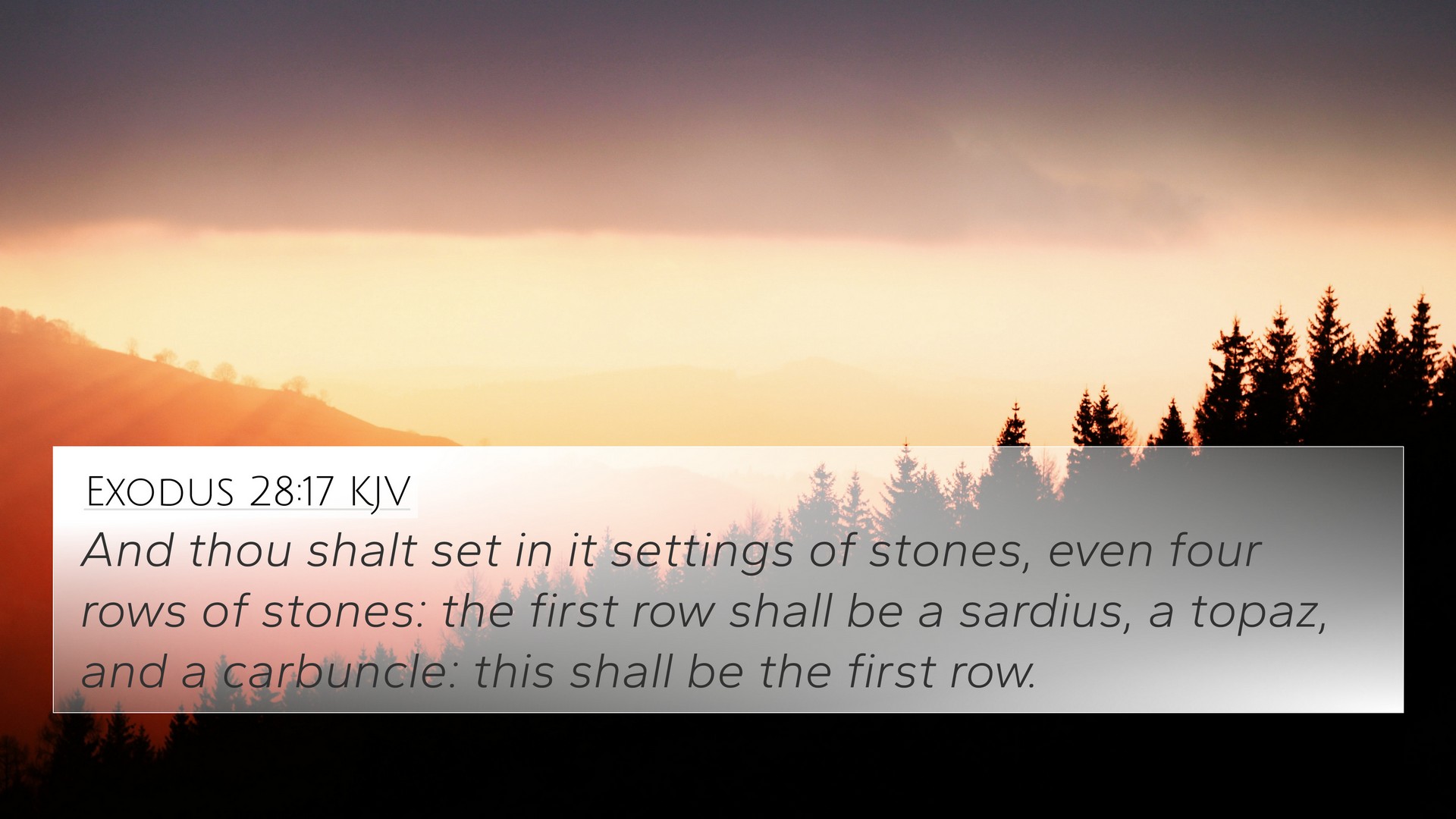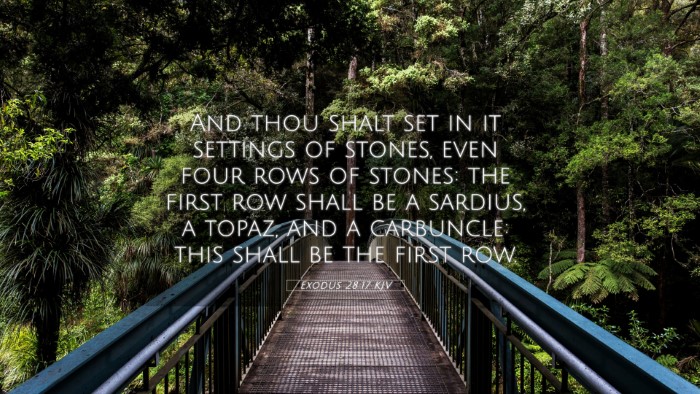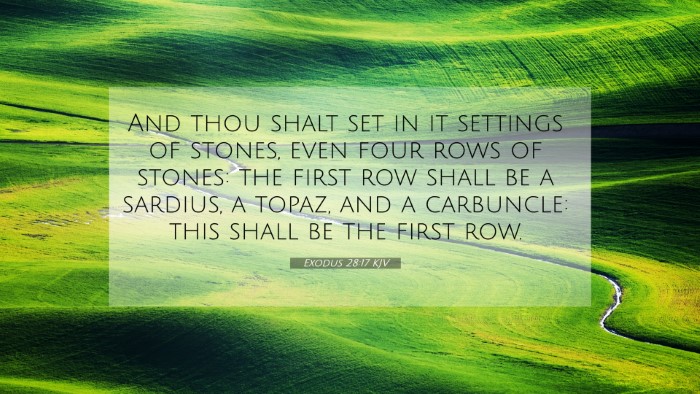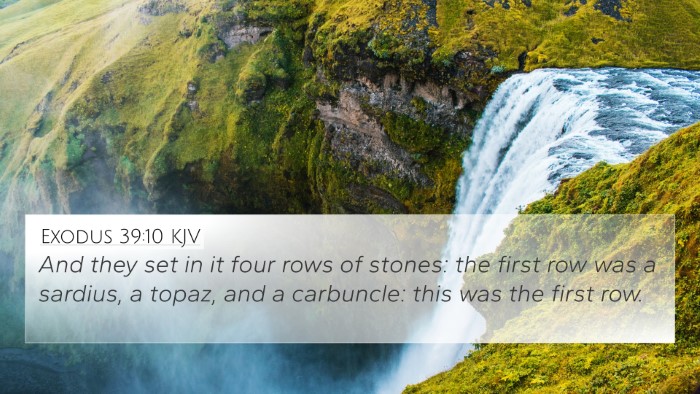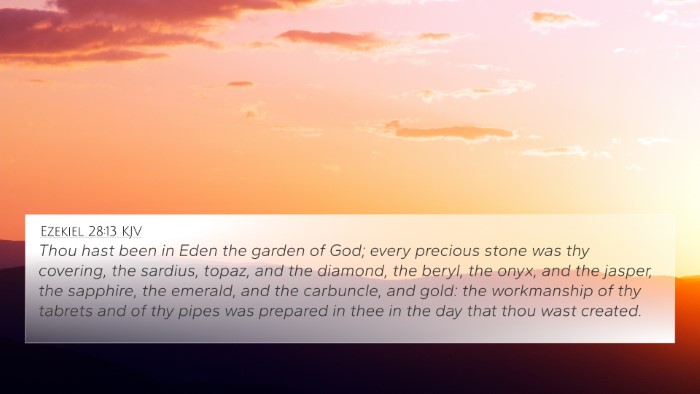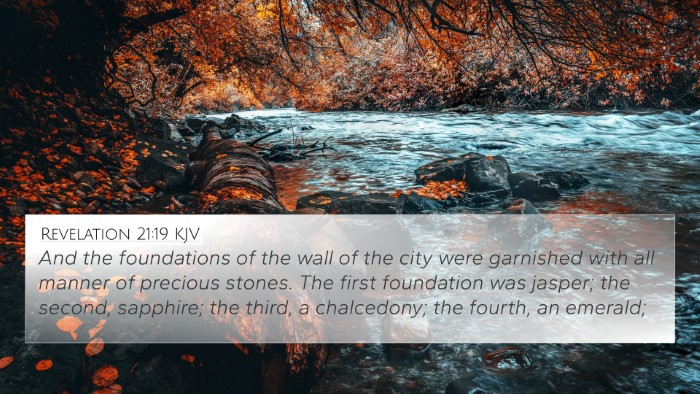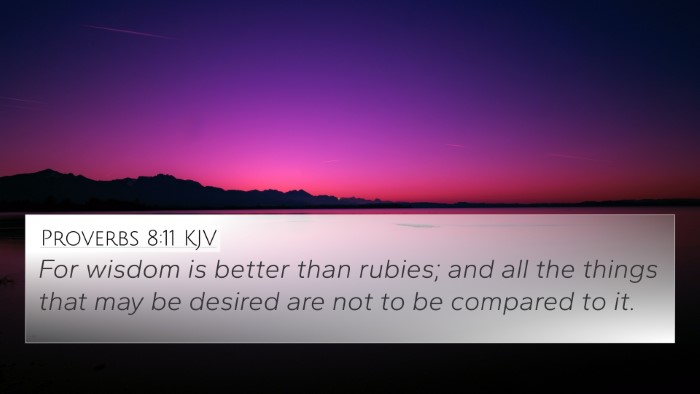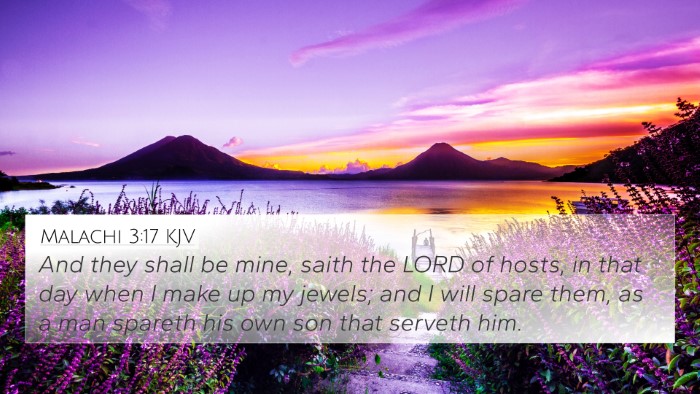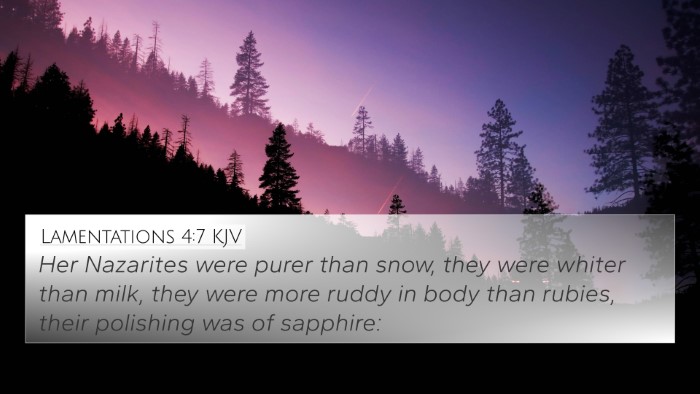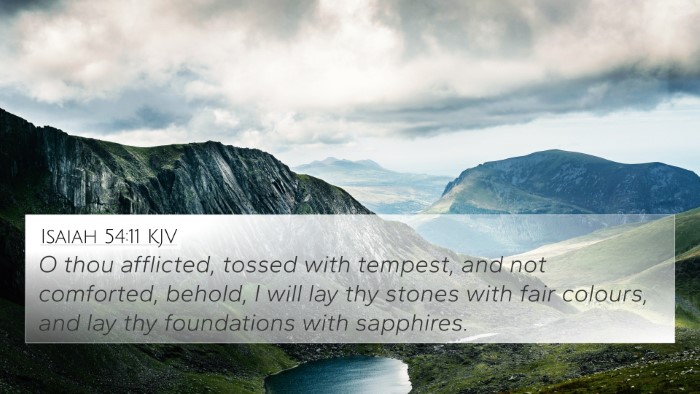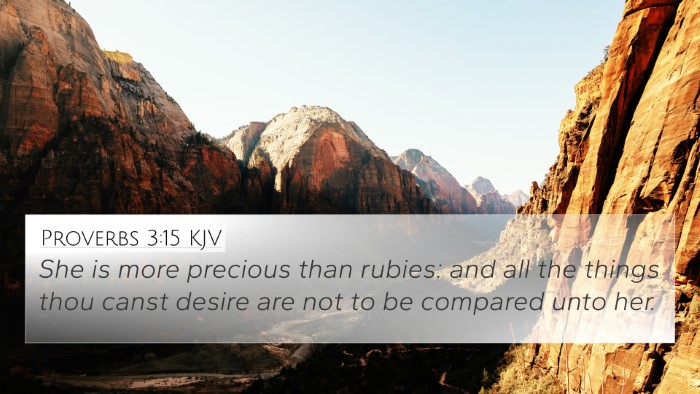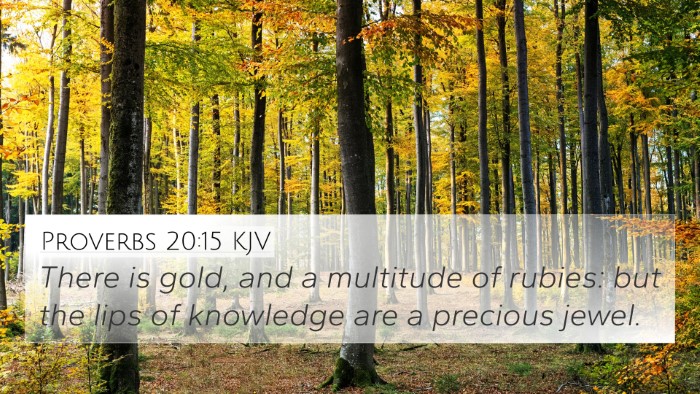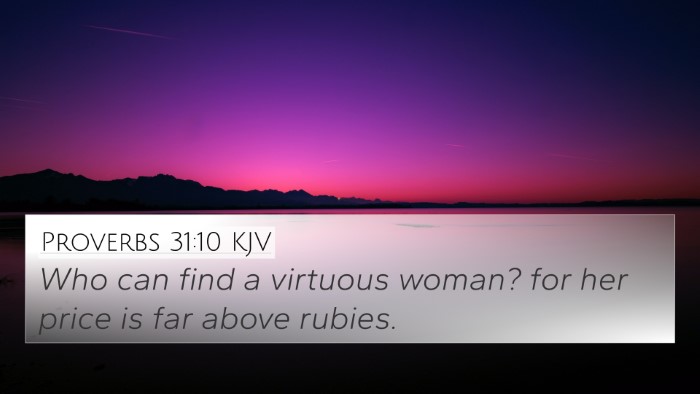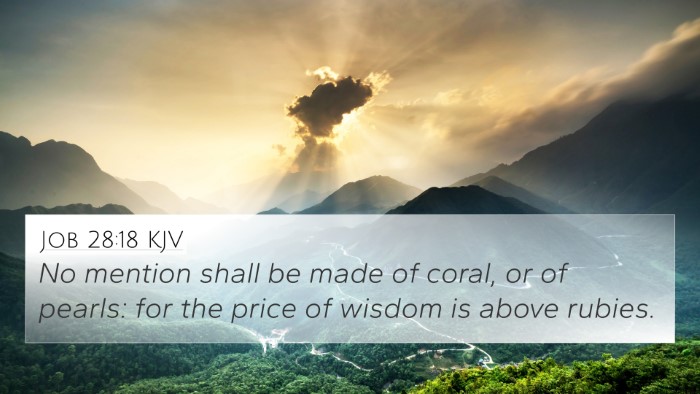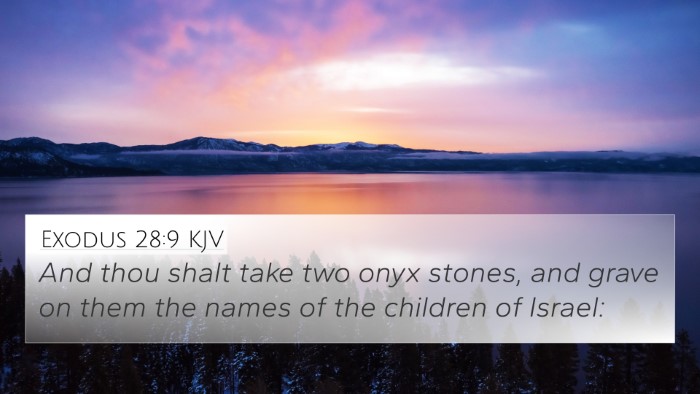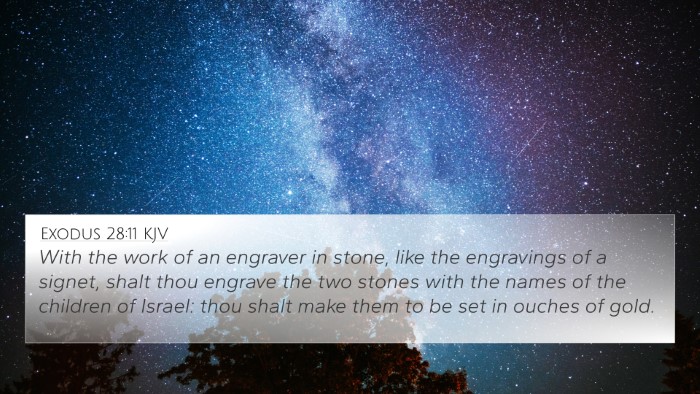Understanding Exodus 28:17
Exodus 28:17 states: "And you shall set in it four rows of stones: a row of sardius, topaz, and carbuncle shall be the first row."
This verse is part of the larger context that describes the attire of the high priest, specifically the breastplate that was to be worn as a reminder of the twelve tribes of Israel before God.
Commentary Insights
-
Matthew Henry: Henry emphasizes the significance of the precious stones and their arrangement, noting how they represent the tribes of Israel. Each stone symbolizes a particular tribe and holds considerable importance in reminding the priest of his duties and the responsibility to the people he serves before God.
-
Albert Barnes: Barnes points out that the breastplate’s design is not merely aesthetic but embedded with spiritual meaning. He discusses how the breastplate serves as a continual reminder of the people of Israel and their covenant relationship with God. The stones are seen not only as decorative but as testament to divine selection and favor.
-
Adam Clarke: Clarke elaborates on the types of stones used, providing insights into their qualities and how they relate to various biblical themes. He highlights that the high priest's clothing, particularly the breastplate, reflects the glory and majesty of God, signifying the connection between the human and the divine.
Significance of the Stones
The selection of stones in the breastplate represents God’s design and purpose. Each of the twelve stones also connects with specific characteristics of the tribes, showcasing their unique attributes and roles within Israel.
Bible verses that relate to Exodus 28:17
- Genesis 49:10-12 - Jacob’s blessings on his sons, revealing traits associated with each tribe.
- Revelation 21:19-20 - Describes the heavenly city adorned with precious stones, echoing the significance of beauty and value in divine presence.
- Exodus 39:10-14 - Details the completion of the high priest's garments, reinforcing the importance of the breastplate.
- 1 Peter 2:9 - Discusses believers as a "royal priesthood," linking the ideas of priestly representation to the New Testament.
- Ephesians 6:14 - The metaphor of spiritual armor suggests a parallel in protection and representation before God.
- Isaiah 54:11-12 - Relates to the beauty and symbolism of stones, reflecting the glory that God imparts.
- Hebrews 7:23-24 - Speaks about the eternal priesthood of Christ, serving as a link between the Old and New Testaments.
Thematic Connections
Exodus 28:17 and its context create connections to various themes within the Bible, including:
- Representation: The notion of the priest representing the people before God is a vital theme throughout scripture.
- Covenantal Relationship: The stones symbolize the tribes’ connection to God's covenant and their identity as His people.
- Divine Sovereignty: The meticulous design reflects God's sovereignty over Israel and the care He has for His people.
Tools for Bible Cross-Referencing
Studying Exodus 28:17 in context with its cross-references enhances understanding. Here are some tools and methods to assist in biblical study:
- Bible Concordance: Useful for locating specific verses and themes quickly.
- Bible Cross-Reference Guide: Offers insights into related verses that provide deeper meanings.
- Bible Chain References: Helps identify interconnections between verses across the scriptures.
- Cross-Referencing Bible Study Methods: Encourages readers to contextualize verses within the broader biblical narrative.
Conclusion
Exodus 28:17 holds profound significance in understanding both the Old Testament priesthood and its connections to New Testament themes. By exploring cross-references and thematic relationships, one can appreciate the continuity of God’s plan throughout Scripture.
